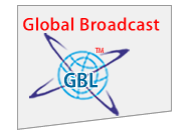
Microwave links are widely used for connectivity in modern digital IP networks. With capacities up to 3Gbps and beyond, a modern Microwave Link network can deliver bandwidth in a reliable, cost-effective and flexible manner – without need for disruption and delay caused by digging up streets and avoiding costly leased-line or leased fibre optic alternatives.
Technology, deployment and applications for modern Digital Microwave Links
CableFree MW Link installed on a telecom tower
CableFree MW Radio Links used for Mobile Backhaul
Microwave links are used extensively in 4G/LTE backhaul networks, 2G (GSM) and 3G (UMTS) mobile operators, wireless metropolitan area networks (Wi-MAN) and corporate networks where high performance, flexibility, speed of deployment and low operating costs are required. Key features of links include high spectral efficiency (256QAM, 1024QAM, 2048QAM and 4096QAM), Automatic Transmit Power Control (ATPC) and Adaptive Coding and Modulation (ACM).
Globally, MW radio links are used for around 60% of all mobile backhaul connections due to the compelling technical and commercial arguments in favour of MW radio compared to leased line and trenched fibre alternatives. Speed of deployment and flexibility – the ability to move sites or provision rapidly – are greatly in favour of MW radio over fibre and cabled alternatives.
A Full Outdoor Microwave Link with 880Mbps Full Duplex Capacity Typically features a radio unit and a parabolic antenna, which may vary in size from 30cm up to 4m diameter depending on required distance and capacity. The radio unit is generally either a “Full Outdoor”, “Split Mount” or “Full Indoor” design depending on operator preference, deployment, features and available indoor space for specific sites and installation.
Full Outdoor 1024QAM MW Radio Link
MW Radio
Wave Technology for E-Band and V-Band
MMW Summary
CableFree MMW Millimeter Wave Link
Millimeter Wave (MMW) is a technology for high speed (10Gbps, 10 Gigabit per second) high capacity wireless links, ideal for urban areas. Using high frequency microwave in the E-Band (70-80GHz) and 58GHZ to 60GHz (V-Band) spectrum, links can be densely deployed in congested cities without interference, and without need for digging for cables and fibre optics, which can be costly, slow and highly disruptive. By contrast, MMW links can be deployed in hours, and moved and reused on different sites as network requirements evolve.
